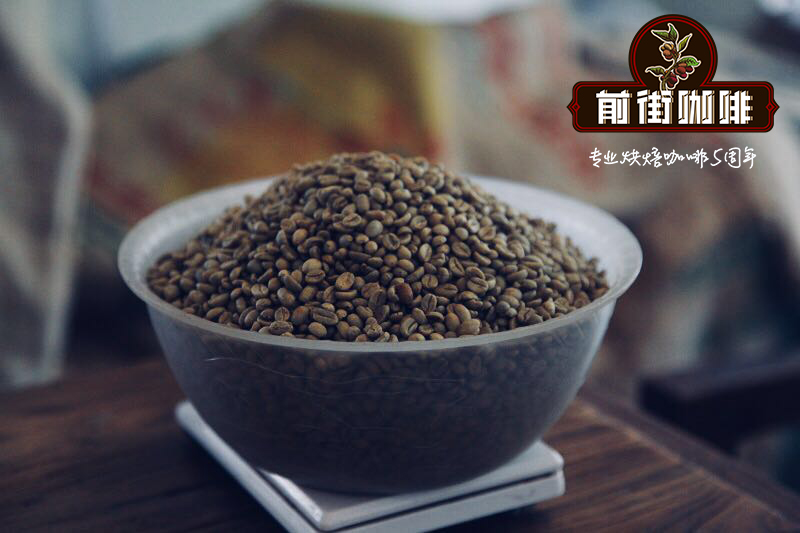The origin and planting environment of the rare Guadeloupe coffee beans

Professional coffee knowledge exchange more coffee bean information please follow the coffee workshop (Wechat official account cafe_style)
This archipelago in the Caribbean used to be an important producer of coffee.
Good coffee production was affected by natural disasters. In 1789, more than 1 million coffee trees on 500 hectares of land produced 4000 tons. Today, only 150 hectares of land is used to grow coffee. This decline can be attributed to the increase in sugar cane and banana production and the destruction of coffee trees by Hurricane Hurricane Ines in 1996.
Political reasons include the redistribution of land from 1962 to 1965, which resulted in huge losses in coffee production. Coffee cultivation takes more man-hours and more money than bananas and sugar cane.
Guadeloupe used to be the best producer of coffee, but now it is no longer exported.
Bonifieur is rated as the best quality coffee in the area, a name that used to be proud of in coffee history.
Sir Gabriel de Clieu in Martinique succeeded in growing coffee in 1720 and some beans in the nearby island of Guadeloupe in 1721. Coffee and cotton production increased between 1730 and 1790, while sugar cane decreased. During this period, the coffee field increased from 15 hectares to nearly 7000 hectares. By the late 18th century, farmland had expanded from its main location in Basse-Terre to the southwest of Grande-Terre.
In the 19th century, in the early 19th century, most of the remaining plantations were located in the higher elevations of Basse-Terre. In 1842, Guadeloupe faced a coffee crisis. Here and other West Indies plantations have been ravaged by Elachista Coffeella larvae. Sugarcane production is dominant, accounting for 59% of arable land containing the crop in 1856, 45% in 1895 and 66% in 1939. In 1891, with the increase in import duties on coffee, its growth was boosted. However, due to low local economic activity, residual coffee agriculture continues to supplement the income of some families. Jules Rossignon's work was mentioned in the Pan American Union publication of 1902 (died in 1883). Here, Rossignon claims that Guadeloupan coffee is similar to Martinique coffee, indistinguishable and similar in price. He described Guadeloupe beans as "shiny, hard, long and clean, uniform and grayish" and exported in buckets and sacks. In the "ordinary category" of coffee, some grains are "smaller, more round, and somewhat crooked". Rossignon also mentioned excellence in the production of coffee in the Sante Islands. In 1899, Guadeloupe exported 1587000 pounds (720000 kilograms) of coffee.
The commercially grown coffee varieties documented by Dumont in 1913 in the 20th century were Arabica coffee and Liberian coffee; the previous varieties were of better quality and more and more productive. He described in detail the production methods of the early 20th century, mentioning that after the drying stage, the coffee was hit and the outer brown cover of the berries was removed, which is called the cafe habitat, and the coating was removed after the silver color of the berries, and the coffee was called cafe bonifieur. In 1918, coffee was produced on 1/9 of the land in Guadeloupe, which was being grown, and about 7 per cent of exports were attributed to coffee. [12] by 1920, coffee cultivation had declined. The decline in coffee production in Guadeloupe was caused by tropical storms; severe local storms in 1921 and 1928 caused severe damage to coffee trees, and the 1921 hurricane affected Buster. Coffee exports in 1914 were recorded at over 1000 short tonnage (8900 kN).
.
END
For more professional coffee exchanges, please scan the code and follow Wechat: qiannjie

Please indicate the source of the reprint.
Important Notice :
前街咖啡 FrontStreet Coffee has moved to new addredd:
FrontStreet Coffee Address: 315,Donghua East Road,GuangZhou
Tel:020 38364473
- Prev

Roasting degree and Flavor characteristics of Huakui Coffee beans how to adjust the baking time curve of Huakui soe
Professional coffee knowledge exchange more coffee bean information please follow the coffee workshop (Wechat official account cafe_style) We got such a good [Sakuran], how to bake it, and how to adjust the Sakuran curve? First of all, I will look at the flavor description provided by the raw bean merchant, and then look at the moisture content of the beans.
- Next

Flavor characteristics and stories of Coffee beans produced by Kopi Luwak in which country
Professional coffee knowledge exchange more coffee bean information please follow the coffee workshop (Wechat official account cafe_style) Kopi Luwak Vietnam Coffee No.1 Brand: Zhongyuan Coffee has won the European Union EurepGAP international certification: some people have questioned that Vietnamese coffee may be contaminated by chemicals because of the heavy use of chemical weapons (such as orange agent, defoliant) by US troops during the Vietnam War.
Related
- Detailed explanation of Jadeite planting Land in Panamanian Jadeite Manor introduction to the grading system of Jadeite competitive bidding, Red bid, Green bid and Rose Summer
- Story of Coffee planting in Brenka region of Costa Rica Stonehenge Manor anaerobic heavy honey treatment of flavor mouth
- What's on the barrel of Blue Mountain Coffee beans?
- Can American coffee also pull flowers? How to use hot American style to pull out a good-looking pattern?
- Can you make a cold extract with coffee beans? What is the right proportion for cold-extracted coffee formula?
- Indonesian PWN Gold Mandrine Coffee Origin Features Flavor How to Chong? Mandolin coffee is American.
- A brief introduction to the flavor characteristics of Brazilian yellow bourbon coffee beans
- What is the effect of different water quality on the flavor of cold-extracted coffee? What kind of water is best for brewing coffee?
- Why do you think of Rose Summer whenever you mention Panamanian coffee?
- Introduction to the characteristics of authentic blue mountain coffee bean producing areas? What is the CIB Coffee Authority in Jamaica?

